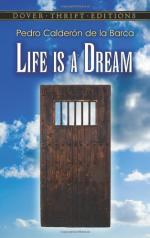|
This section contains 669 words (approx. 2 pages at 400 words per page) |

|
The Golden Age in Spain
The period between 1580 and 1680 is called the Golden Age in Spain, when art and literature flourished. The first part of Don Quixote, by Miguel de Cervantes (1547-1616), was published in 1605. In this novel, Cervantes plays with the shifting boundaries between reality and perception and introduces, in the figure of Don Quixote, a character who shows the influence of literature on consciousness. Lope de Vega's Fuente ovejuna, or The Sheep Well (performed in 1614), dramatizes a village rebellion against an authoritarian governor, in which the characters realize both a group identity and individual identities. In 1630, Tirso de Molina (ca. 1580-1648) first introduced the character of Don Juan in his play El burlador de Sevilla, or The Love Rogue. The Don is a figure who embodies the Renaissance passions, defining himself by his appetite and by his defiance of convention. During the period between 1597 and 1614, the...
|
This section contains 669 words (approx. 2 pages at 400 words per page) |

|




